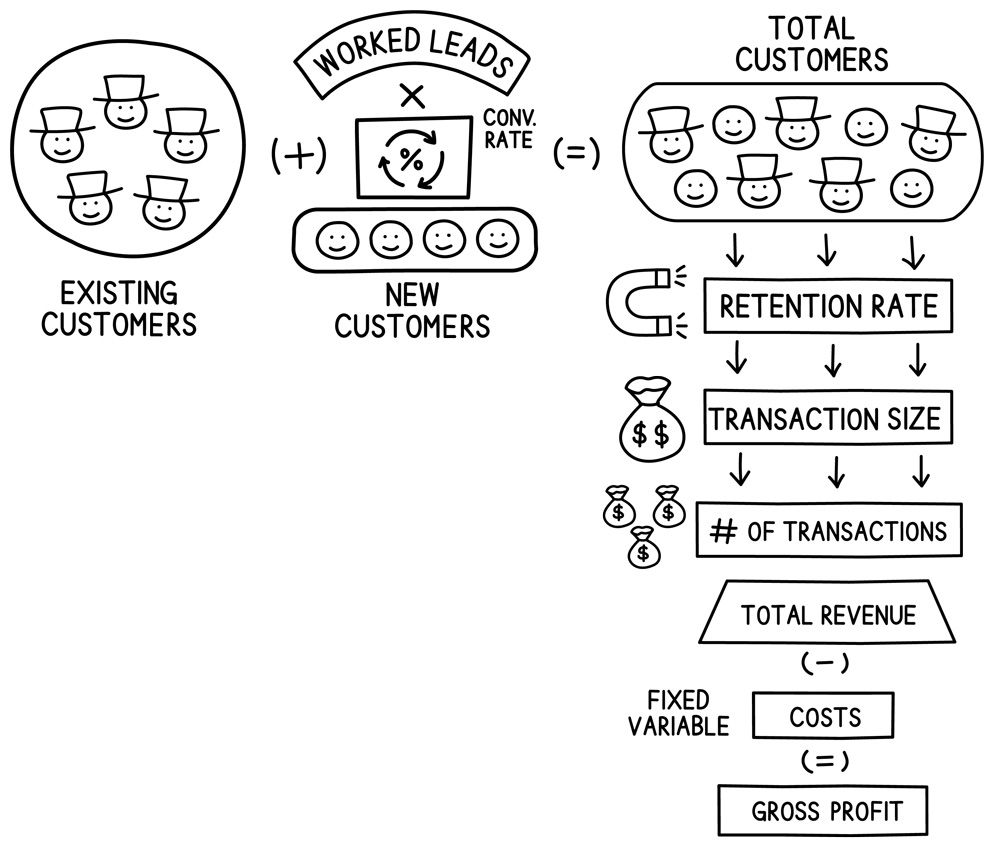|
“Maps schematize the real world in that they are two-dimensional, they omit information, they regularize, they use inconsistent scale and perspective, and they exaggerate, fantasize, and carry messages” – Barbara Tversky.
Mapping
It's helpful to have maps. Humans are good at mapping. The experts will tell you that our maps tend to be either top down, or first person in nature. I keep one in mind when talking to businesses about growth.

It helps me ID areas where I might be of assistance.
I know, it's so simple, right?!?
It is. Let me run through each scribble from top to bottom.
At the top, you have customers. Existing customers plus new customers (which come from leads, and we can calculate an effectiveness we call the conversion rate).
Each year, a percentage of these customers do business with you. That’s your retention rate.
Each year, those transactions have an average value. That’s your transaction size.
Each year, your company does a certain number of transactions with those customers.
That gives you total revenue.
Subtract your fixed and variable costs, and get your gross profit.
That’s simple, right?
There’s one more expense that comes with growing, and we’ll call that your growth expense. It's in the costs section, but I don't talk about that until we've decided where we're going to focus.
I know your business is more complicated than this, but in my mind, this is the process you go through to get a profit.
With this map in mind, I get to listen to the issues being discussed. Trying to hear what we need "more" of or "less" of, then imagining which levers will get them there.
You have maps in your company too. Each of your people have an idea of what goes on in your company, and their role in it. It's not a bad idea to get those maps out and on paper. Someday, when you need more or less of something it will come in handy!
|